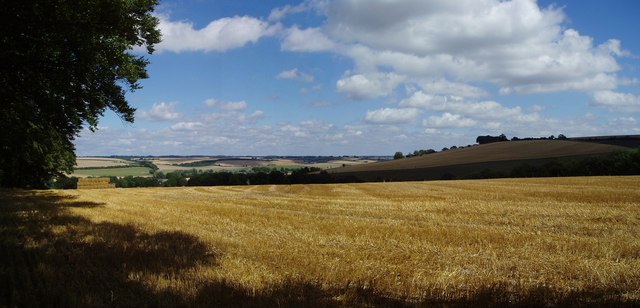Cranborne Chase has been a hunting ground since the time of the Bastard. It forms part of a wider character area stretching from just south of Salisbury to just north of Weymouth, and otherwise known, along with the neighbouring Dorset Heaths character area, as Hardy Country. It is a sparsely-populated chalk downland dominated by food production, though much of its arable land has been given over to the production of biofuels.
There is archaeological evidence of human settlement on the Downs from the Mesolithic onwards. Important Neolithic and Bronze Age sites include Maiden Castle, Hambledon Hill and the Dorset Cursus. The area also contains the famous “rude man” of Cerne Abbas. Dorchester, civitas capital of the Durotriges, was an important settlement in Roman times.
The chalky grasslands and prehistoric woodlands are an important habitat for species such as the skylark and marsh fritillary. Meanwhile, the chalk streams contain threatened species of fish such as the bullhead and brook lamprey. The local Wiltshire Horn and Dorset Horn are two of the oldest English sheep breeds.
The A354 highway from Salisbury to Portland bisects the area, linking the main settlements of Dorchester and Blandford Forum. For a couple of miles, it follows an old Roman road, Ackling Dyke, which once connected Old Sarum with the Badbury Rings near Wimborne.
The linear villages are mainly clustered along the deep river valleys. Older houses tend to be timber-framed and made of brick, sometimes mixed with flint or the chalky limestone rock known as clunch.

